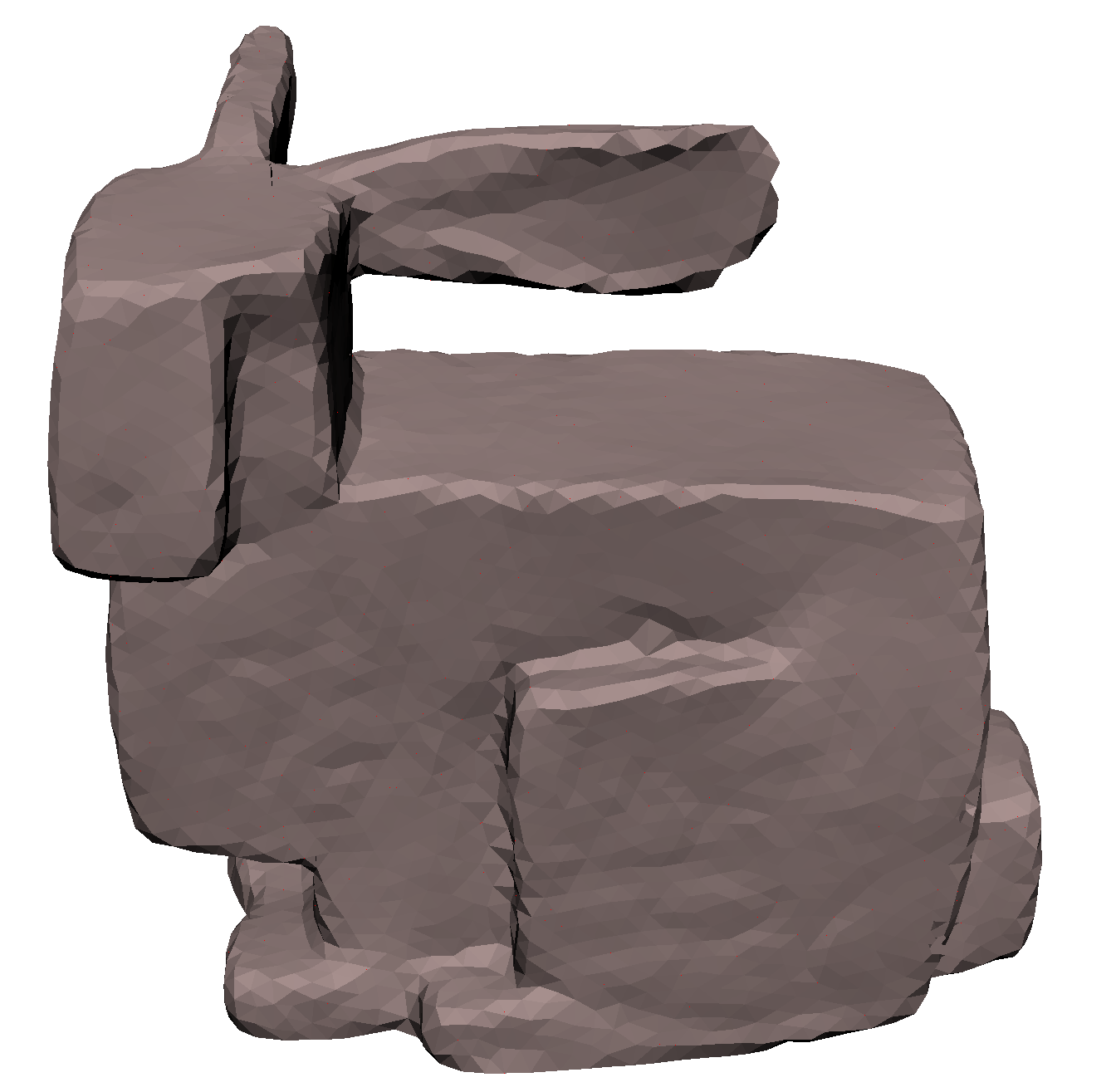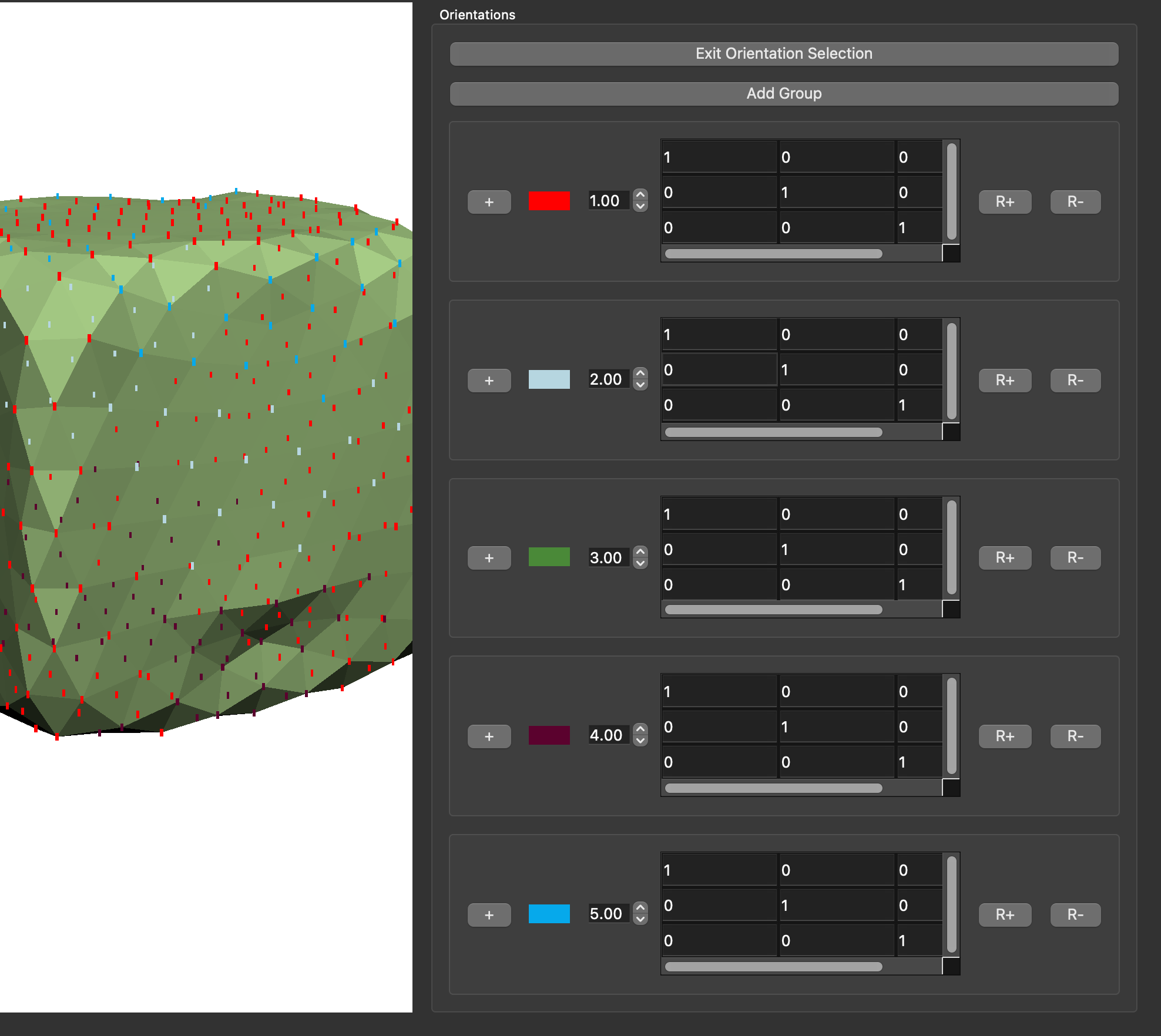Cubosity (née Stamortack) is an implementation of Cubic Stylization (Liu & Jacobson, 2019), created as a final project for the Spring 2023 offering of CSCI 2240 by Zack Amiton & Stewart Morris.
Cubosity is a Qt application; the project CMakeLists.txt should provide all the necessary setup, though certain external library nede to be manually installed.
This project relies heavily on the Eigen linear algebra library. A vendored version of Eigen 3.4.0 is included as a submodule, and can be downloaded by running:
git submodule update --init --recursive
This project uses OpenGL and glew, and expects a glew directory to be added to the project folder. Build instructions for glew should be available after installation.
Out-of-the-box, Cubosity implements ADMM for cubic generalization as described by the paper. However, we implemented polyhedral generalization, using OSQP for our quadratic solver (as opposed to CVXGEN as mentioned in the paper, which is not publicly available). We use the osqp-eigen wrapper for Eigen compatibility, which can be installed via conda using:
conda install -c conda-forge osqp-eigen
though more complete installation instructions can be found on the package websites.
Cubosity.Teaser.mp4
Cubosity operates on meshes in .obj format (as well as progressive meshes using a custom format detailed below); to run, pass in a mesh by running:
cubosity /path/to/mesh.obj
or a progressive mesh directory by running:
cubosity /path/to/progressive/mesh/
Mesh vertices can be assigned to an orientation group by clicking the + button; each orientation group has a modifiable set of n-by-3 vectors to which the shape attempts to align itself (cube by default), as well a λ value (which controls the degree of amount of generalization). We found good results with λ values between 0–3; high values of λ tend to result in less stable results, causing meshes to "crumple" in on themselves (as the rigid ARAP behavior is overpowered by the generalization term).
Cubosity supports generalization to arbitrary basis vectors, which means arbitrary shapes (rather than just cubes) can be provided as orientation constraints. Regular polyhedra generally lead to pleasing results:
Cube
1 0 0
0 1 0
0 0 1
Octahedron
0.57735 -0.57735 0.57735
-0.57735 -0.57735 0.57735
-0.57735 0.57735 0.57735
0.57735 0.57735 0.57735
Dodecahedron
0.850651 0 0.525731
0.850651 1.23058e-07 -0.525731
-0.850651 0 -0.525731
-0.850651 1.23058e-07 0.525731
-0.525731 0.850651 -1.23058e-07
0.525731 0.850651 1.23058e-07
However, any set of n-by-3 by vectors can be generalized to; sphere.obj is a good mesh to use when experimenting how a given basis set will warp a mesh!
Generalization relies on iterative solving, which scales linearly with the number of vertices present in a mesh. Hence, larger meshes tend to take far longer to generalized. As such, meshes can be simplified (implemented using classic quadric error collapsed), which saves a collapsed mesh in a directory of the same name (i.e. bunny.obj would be stored in directory bunny). This process only needs to be done once per mesh!
This progressive mesh is comprised of two files: a regular .obj file (representing the simplified mesh), as well as a .stamp file (Stamortack Progressive Mesh format), which contains the collapse sequence used to generate the simplified mesh (as well as remapping metadata between vertex, faces, and edge IDs):
# Remap vertices (vertex index 0, 1, ... should be assigned ID $VID)
v 0 $VID
v 1 $VID
...
# Remap faces (face of index 0, 1, ... should be assigned ID $FID)
f 0 $FID
f 1 $FID
...
# Edge relationships (edge EID connects vertices VID1 and VID2)
e $EID $VID1 $VID2
...
# Collapse sequence (in order: collapsed edge, removed vertex, shifted vertex, removed faces, wing vertices, neighbor edges, affine matrix, neighbor order)
C $CollapsedEID R $Removed S $Shifted F $TopFID $BotFID W $TopVID $BotVID N $NeighborEID0 ... $NeighborEIDM A $C00 $C10 $C20 ... $C0N $C1N $C2N O $NeighborVID0 ... $NeighborVIDN
...where $Variables are values, and uppercase letters are to help with parsing. VID, EID, and FID stand for vertex, edge, and face ID respectively. Further, $Removed and $Shifted are shorthands for the following structure:
$Removed=$RemovedEID $RemovedVID $RemovedVertex.X $RemovedVertex.Y $RemovedVertex.Z$Shifted=$ShiftedEID $ShiftedVertexVID $ShiftedVertex.X $ShiftedVertex.Y $ShiftedVertex.Z
Passing in a progressive mesh directory will load the directory .obj file, and remap IDs as well as populate the collapse sequence using .stamp files (allowing low-resolution meshes to be generalized, then expanded to propogate modified geometry to high-resolution meshes).

